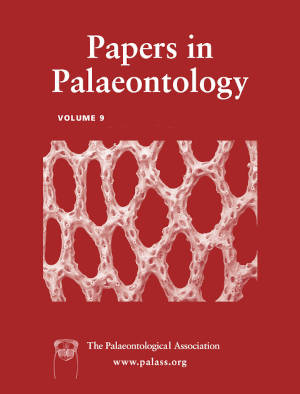Article: Three-dimensional reconstruction, taphonomic and petrological data suggest that the oldest record of bioturbation is a body fossil coquina
Publication: Papers in Palaeontology
Volume:
9
Part:
6
Publication Date:
2023
Article number:
e1531
Author(s):
Christos Psarras, Philip C.J. Donoghue, Russell J. Garwood, Dmitriy V. Grazhdankin, Luke A. Parry, Vladimir I. Rogov, and Alexander G. Liu
DOI:
10.1002/spp2.1531
Abstract
Abstract Fossil material assigned to Nenoxites from the late Ediacaran Khatyspyt Formation of Arctic Siberia (550–544 Ma) has been presented as evidence for bioturbation prior to the basal Cambrian boundary. However, that ichnological interpretation has been challenged, and descriptions of similar material from other global localities support a body fossil origin. Here we combine x-ray computed tomography, scanning electron microscopy and petrographic methods to evaluate the body or trace fossil nature of Nenoxites from the Khatyspyt Formation. The fossilized structures consist of densely packed chains of three-dimensionally preserved silicic, bowl-shaped elements surrounded by distinct sedimentary halos, in a dolomitized matrix. Individual bowl-shaped elements can exhibit diffuse mineralogical boundaries and bridging connections between elements, both considered here to result from silicification and dolomitization during diagenesis. This new morphological and petrological evidence, in conjunction with recent studies of the late Ediacaran tubular taxa Ordinilunulatus and Shaanxilithes from China, suggest that the Khatyspyt specimens most probably reflect a coquina deposit of Shaanxilithes-like body fossils. Our data support the possibility of Shaanxilithes-like organisms representing total group eumetazoans.
